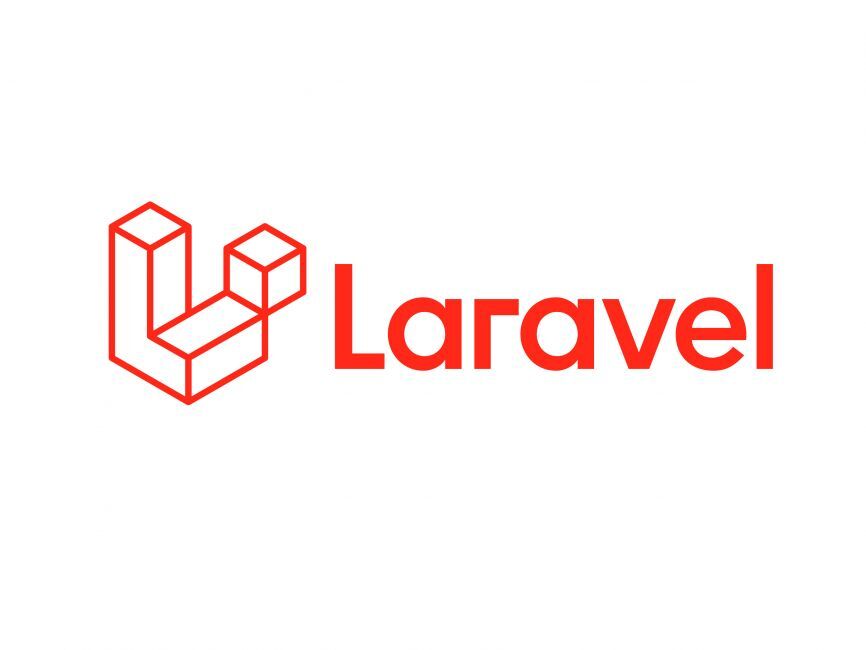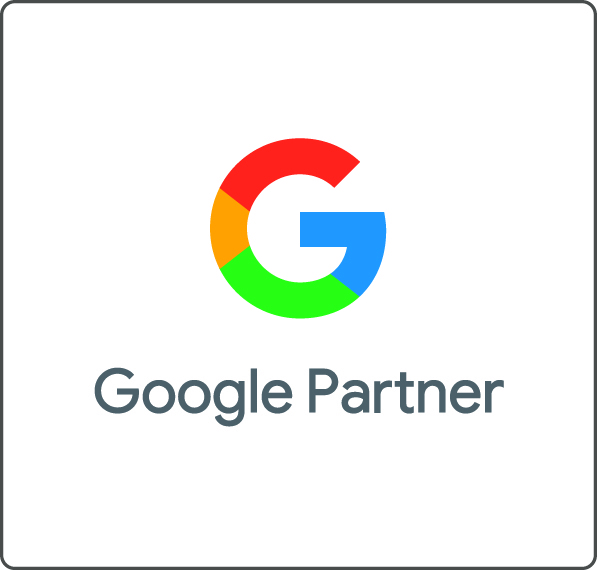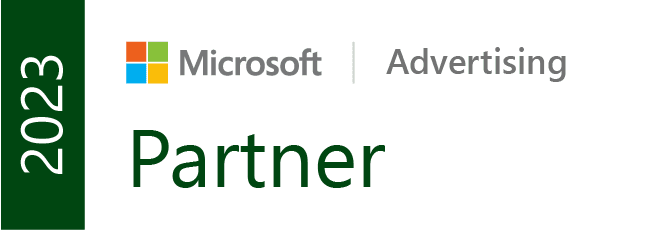2 days. 1 beach. 20 thought leaders. It could only be that time of year. Silicon Beach 2016 (#SB2016).
I attended both days of this truly inspiring and thought-provoking event and will now aim to do the content justice in my recount of the experience. Grab a cuppa though, even in shortened form, there is lots for me to share with you. Alternatively scan through the sub headings and pick out what interests you most!
Whilst like last year, the event agenda was never released, nor did event organiser Matt Desmier give his speakers much of a brief for what to talk about, having listened to all talks I’m going to categorise them into one of the following areas:
- Innovation
- Marketing practice
- Consumer behaviour
- Personal crusades to make the world (& our profession) a better one
Innovation
The use of the word ‘innovation’ was sparingly used, or in many cases avoided during this conference but I believe it’s still got a part of play in uniting the talks of the following speakers...
Lauren bowker, founder of the unseen
Lauren was the first speaker of the whole event, and she gave one of my favourite talks. It took me a little while to process the story of Lauren’s creation of The Unseen but she had a truly inspiring story to tell and presented an amazing showcase of her work.
Having studied both textiles and chemistry at university, Lauren creates chemical compounds which combined with fabric can react in ways which reveals what the human eye cannot detect. E.g. her first prototype was a jacket which detected pollution and changed from yellow to black.
In the early days of her exploration into compounds and fabric she saw how people responded to the colour changes more effectively than the numerical data she had previously collected and realised that she was onto something. Our designer Laura spoke about the importance of data visualisation at our Attention summit earlier this year, whilst her talk was inspiring then, Lauren’s work was totally awe-inspiring! (Sorry Laura)
Her company, The Unseen, is a result of a vision to develop intelligent materials that can change lives. They are by purpose a material exploration house with a mission to make data more accessible in a way which improves lives.
Drawing inspiration from everything unseen – data, x-rays, energy forces, wind, space, cells, molecules… - Lauren and her team work up scenarios in which they want their designs to react and create formulas that respond to those scenarios.
The images below show some of their designs reacting to body heat (head piece) and wind/shade/sun/atmospheric temperature (backpack).
It was totally mind blowing that these pieces are also created with ‘UK conditions in-mind’ – in other words if you were to take these pieces to the US for example, they would react differently even with the same sort of stimulus. Likewise compounds are infused into materials which respond to the wearer, so no two responses are ever the same.
Definitely head over to The Unseen website to discover more about this amazing work.

Jenny howard, strategy partner, sunshine
Jenny’s talk centred around popular culture and how it can help us predict our digital futures. Its power lies in it being...
- A way for us to explore our hopes, fears and dreams (especially through films and TV series) - inspiring leaps of the imagination
- A barometer of what’s most important to us
- A way to explore the implications of an alternative - design fiction is an approach to design which speculates about new ideas through prototyping and stereotyping
- A way to overcome initial fears - apparently, when the telephone first arrived, it was considered an instrument of the devil!
- A way to stimulate demand
She presented examples from Inspector Gadget (1980s) with Penny wearing the first “Apple Watch”; Star Trek imagining the iPad nearly 30 years ago; and what the future could be like if the 2013 film ‘Her’ is anything to go by.
I’m hoping, after watching Black Mirror (inspired by listening to Jenny’s talk), that a lot of our future reality isn’t quite as bleak as we can paint it to be!
Damian ferrar, business transformation, r/ga
Damian’s talk provided the battle between innovation (doing the same things better) and disruption (doing new things which make the old things obsolete).
He shared an ‘exit diagram’ which plotted the demise of letter writing (late 2000s), the Berlin Wall (1989), privacy (1990s) and ‘getting lost’ (2015) and stimulated debate around the predictions for when desktop computers (2024), peace & quiet (2037) and ugliness (2050+) may all exit our lives… (apologies for the poor image quality). I wonder how right he will be.

He also used a marketing campaign from The Pilion Trust to stress how familiarity can breed indifference. The campaign was a social experiment to show how the general public were passionately willing to tell off a man wearing a billboard saying "f#*k the poor", but when he wore a similar "help the poor" sign he was totally ignored by passers by. Accompanied by the slogan, we know you care, please care enough to give, the campaign definitely helped to highlight the discrepancy between people's attitudes when confronted with injustice and bigotry about poverty, and then their apathy when asked directly to help do something about it - donate.
He borrowed a quote from George W Bush to highlight the need for disruption “you can’t do today’s job, with yesterday’s methods, and still be in business tomorrow.”
We should be aiming for strategic disruption, not solving problems people don’t care about. He stressed that as consumers we are buying less, but experiencing more and therefore brands should obsess less about what they look like, and more what they feel like.
This goes hand in hand with another remark he made “a brand is not about what you sell, but what you stand for” which echoes the sentiment of Mark Masters and his content revolution quest.
Similarly he made the statement to “tell a good story, you have to live a good story!”
Rather than spending time looking at the past, we should be using data to predict the future.
We should be focusing on emotion and experiences, not logic and things.
We should be selling opportunities, not time, measuring through return on involvement, not return on investment.
Innovation can often lead to (in his words) an overinvestment in an underwhelming solution. Many agencies spawn innovation labs, incubators, hubs and teams to work the future out. But innovation is too often used to fuel short-term buzz rather than meet the unmet needs of the consumer. The agency gets excited. The client gets bored. The consumer gets nothing.
Transformational businesses on the other hand are made on purpose and feed on collaboration, not competition. He challenged us to ‘create the company that will make your current business redundant.’
Damian presented on day two, on day one Will Harvey had previously shared his thoughts on the rise of the intrapreneur (the act of behaving like an entrepreneur, but in larger organisations). As he eloquently put it, the “F#ck it, I’ll do it” mentality.
Will harvey, innovation lead for vccp
Will’s talk unknowingly had already laid the foundations in our minds that innovation shouldn’t be seen as a department, as a team, as a process. He offered some core traits of an intrapreneur…
- Energetic
- Curious
- Collaborative
- Resilient
- Ambitious
- Personable
…but he also encouraged us to
- build a fellowship that people wanted to be part of
- create a structure, but not so much of a structure that it siloes people
- provide things for people to play with – whether its technology, space, allowance etc.…
- offer recognition – encourage and motivate, give reassurance and award credit
…in order to create focus and nurture an innovative culture.
In the words of Marc Curtis, Head of Labs at TMW “innovation should run through everything we do, and if you can get that right, then a special department becomes unnecessary.”
This was his take on the role of the intrapreneur – could this be you?

Marketing practice
Phil adams, planning director, blonde
One of the most entertaining, and unique talks of the conference came from Phil Adams who told the tale of a fictional company (Kitchen & Bathroom Sealant Manufacturers Association) to stress the point that we shouldn’t leap ahead with high interest marketing campaigns for low interest marketing categories nor should we be blasé with our choice of language in marketing communication.
E.g. If something is ‘shareable’ it doesn’t mean it’s good. An .exe file is unshareable because it’s the wrong format, not because it’s bad. Over email, files that exceed the send limit can’t be shared because they’re too big, not because they’re poor. Therefore Phil encouraged us to use ‘shareworthy’ not ‘shareable’ as a metric for ‘good.’
He also stressed the need to be transparent with our data legends (those little keys next to charts and graphs that we often neglect). When using data and charts to convey a point, it is imperative that the data legend truly represents the data collection method and context, otherwise it’s meaningless (or at best, flawed).
Tom whitwell, senior consultant, flux
In a “Fight Club”esque tone, Tom told us that the golden rule of pricing was…you shouldn’t talk about pricing. Never ask a customer how they would react to price changes, as they don’t really know until they have to react. You’ll need to set the agenda.
Tom’s recommendation is to opt for good, better, best pricing strategies. E.g. Low, medium, high. Option 1, 2 & 3. You’ll find many examples across the web of brands using this technique. Given a choice of 3, how often do you opt for the middle one?

In this situation, context around pricing is very important. Using a study on beer prices, Tom showed us how shifting the highest priced item led to a shift in revenue – if you put a favourable rate in the middle of a tiered pricing structure you’re likely to do better!
E.g. 100 sales
Scenario 1 – Low $1.20 (0% purchased)| Mid $1.80 (30% purchased) | High $2.60 (70% purchased) = $222 total revenue
Scenario 2 – Low $1.80 (0% purchased)| Mid $2.60 (90% purchased) | High $3.40 (10% purchased) = $268 total revenue
Putting the $2.60 beer as the middle option generated more sales than putting it at the higher end (even though it was the same price) – and generally people pick the middle one! It’s worth experimenting with your pricing strategy as trying to find ‘one perfect price’ is difficult.

Glyn britton, chief strategy officer, kbs albion
Glyn took us on a journey through ‘unbundling the bundle.’ He believed that there are wavelengths in product/service propositions which either bundle or unbundle customer options:
- In the music industry there was singles (unbundled), then albums (bundled), then specialist record labels (unbundled), then compilation albums (bundled), and now digital tracks are bought individually (unbundled) over a very short time frame.
- In banking we’ve had all products/services under one-roof (the high street bank); then we’ve seen specialist retail banks, credit card specialists, loan specialists arrive and a proliferation of choice; soon we may head back to a world where there are fewer players.
- In the ad agency world clients typically worked with full service agencies (50 years ago), then they preferred to work with specialists (15 years ago), and now clients are crying out for everything to be brought under one roof again.
In a personal quest to determine whether you could predict when the next wave of bundling or unbundling occurs at an industry level, Glyn frankly admitted it couldn’t be done. However, the notion that some sort of cycle of bundling & unbundling can occur is an interesting one, and one to look out for in your own sector (as trends are easier to spot in some cases more than others).

Mark earls, herdmeister, herd consultancy
Day one ended with an entertaining demonstration by Mark (and some unsuspecting delegates) on the importance of copying. In his own words he believes copying is humanity’s best hack. It outsources the cognitive load (amount of mental effort required) and allows us to do something better, having learnt from someone else.
Using the principles of Chinese whispers, we were shown how easy it is for us as human beings to make errors when we’re trying to copy :-) However, rather than seeing this as a negative, and whilst we don’t want to create chaos, the errors can give you something far better. In the demonstration we went from a simple arm movement, head tap and salute to, by the end of it, a flamboyant ‘dance.’
A couple of quotes for those who like them…
Originality is for people with short memories.
It’s not whether you copy, it’s how you do it.
Mark Earls
Dan machen & neil davidson, heyhuman
I remembered seeing Dan at last year’s conference when he spoke about an advertiser’s constant battle for consumers’ attention. This year he was joined by Neil, who introduced us to the mind-set “Generation Tinder” - 14 new brand relationships which prize ease, accessibility and value above loyalty.
This mind-set values fleeting and shallow relationships more than long term, deeper relationships and loyalty which brands have historically aspired to. The challenge now, they suggest, is to understand where a brand sits amongst these typologies – from friends with benefits relationships (like Easyjet) to committed partnerships (like Apple).
To continue on from last year’s talk, Dan presented HeyHuman’s brain friendly creative tips – created to help overloaded audiences process advertising messages.
His advice included:
-
Visual techniques – consistent use of distinctive brand assets to mentally prime people – be recognisable
-
Sensorial techniques – ‘textural’ language activates more of the brain and triggers innate memories which help with engagement – e.g. using ‘a rough day’ vs. ‘a bad day’ – be resonant
-
Contextual relevance – matching mind-set with medium – e.g. create a 5 second pre-roll ad on YouTube not a 30 second one – be relevant
I also liked the statement; make everything easy, but with a meaningful bit of friction (otherwise you lose a connection with the customer).
Some examples of companies applying friction include Hello fresh (skill building in cooking); Happn (collision based dating) and Airbnb (a new kind of ‘hotel’). Whilst we strive to offer ease (Generation Tinder) we shouldn’t always make things effortless.
Using excerpts from Wall-E and the portrayal of the future human, Dan told us ‘a life with ease isn’t necessarily a good life at all.’ Would you agree?

Consumer behaviour
Benita matofska, founder, the people who share
@benitamatofska
Benita introduced us to the socio-economic ecosystem, approach and mind set known as The Sharing Economy. A system built around the sharing of resources and a different kind of value exchange. Value is not perceived solely as economic but social and environmental as well, powered by the crowd.
Renting, borrowing, swapping are all kinds of sharing – and all promote access over ownership. Access the things you need, pay only for what you use.
Benita mentioned a staggering statistic – there are over £3.5 trillion worth of idle resources worldwide and yet 40,000 people die each day because they don’t have the basic resources to survive. The sharing economy matches resource with need so that there’s no need for waste.
The wake-up call for businesses (if you need one) is the observation that people can trade directly with one another now and aren’t reliant on companies for their products and services. 90% of consumers apparently say they want brands to ‘share’ yet only 10% are considered to be doing this well. Brands that don’t find a way to involve the crowd and be part of the sharing economy could quickly go out of business. Our social media expert Jane Cooper recently wrote a great post about tribal social marketing, this could be your first step to getting involved with your crowd.
The Sharing Economy started out with a millennial following, 25-34 year olds, middle-class, educated who were looking for experiences and a desire to belong. Fast forward 8 years and it’s grown beyond its millennial adopters, and has been quoted to have 28% of the global adult population participating in it. People are being defined by what and how they share. Quite simply, we’re becoming what we share.
Benita’s talk was nicely supported by Jess Ratty from Crowdfunder, who stressed the importance for brands to step away from emulating our passions in marketing campaigns and to look towards helping us achieve them instead. With videos from some of Crowdfunder’s successful recipients, Jess inspired us to believe in our dreams, have the confidence to just get on and do it, and to not be surprised when you find that others are willing to do it with you. There are many brands getting involved in social enterprise with the aim of joining our lives rather than being in parallel to it.
Personal crusades
My fourth and final section (if you're still with me!) is about those speakers who passionately shared something that they believed in.
Duty
Richard huntingdon, group strategy officer, saatchi & saatchi
As marketers, the stuff we do can have an influence on the world, and thus Richard decided to speak of our duty in three areas:
- Commercial duty
- We have a duty to the businesses we work for, the businesses we create and the clients we serve
- Social duty
- There is power in what we create
- What we portray in our ad campaigns
- References to societal norms which can be used and abused
- Winning creates casualties
- We usually focus on our successes, but we are weaker at predicting the negative consequences
- There is power in what we create
- Political duty
- We should be aiming to do something good with the power we are given
- We should try and solve the problems on our own doorstep though rather than solve someone else’s
- We should be aiming to do something good with the power we are given
These sorts of statements definitely made me reflect on my own behaviour as a marketer, and hopefully they’ll encourage you to be mindful of the decisions you make or the recommendations you pose when it comes to marketing campaigns.
Leadership
Nadya powell, managing director, sunshine
Due to the title of her talk “Don’t f##k with the X-Men” I knew this was going to be an entertaining and fun way to learn more about leadership. The X-Men by their very nature are a group of diverse, unique and extremely individual “beings” founded by Professor X. As an off-shoot to this Nadya also spoke about her work on the Great British Diversity Experiment – an experiment designed to prove that diversity leads to a better society, solutions and a better world. Another great tie-in with the X-Men theme!
Nadya paralleled Professor X’s style of leadership with that of arch-rival Magneto with the aim of explaining why Professor X has superior leadership skills to Magneto (if you love the films/comics then this will be more resonant to you as to why she chose this example).
Professor X leadership style
Empathetic
Vulnerable
Generous
Collaborative
Magento leadership style
Single-minded
Invincible
Ruthless
Dictatorial
Whilst both ‘powerful’ leaders, one has a lot more success at inspiring others and aligning everyone for the greater good, no matter how diverse they are.

A good leader should inspire others, but in order to be inspiring, Nadya explained you have to have a vision. She encouraged us to jot down our vision but asked us to include the why behind it (e.g. what is the purpose of this vision?). Give it a go, it's actually quite tough.
She also highlighted that when you’re a leader you are always responsible for an output, you should never abdicate, only delegate. Abdication leads to giving up this responsibility, whereas delegation ensures that you’re still involved and supporting those who are delivering the action in order to accept responsibility for the output.
Artificial intelligence & data privacy
Pete trainor, director of human focused digital, nexus design
I will end my whistlestop tour of Silicon Beach 2016 on the talk from Pete Trainor, which was so emotive it left many of us with a lump in our throat and tear in our eye. Having been a designer for over 20 years Pete confesses to being a very curious person drawn to shiny things (although not necessarily the current ‘big shiny new thing’). His latest venture is doing “stuff” with AI which has challenged his belief system and level of knowledge.
Now this in itself isn’t what drew the tears. It was in fact Pete’s mission to reduce the UK’s male suicide rate by one. Just one. A single life through AI intervention. With personal experience and an enquiring mind, he had this theory that perhaps he could design something using AI to offer guys ‘help before they knew it.’
With the support of his colleagues at Nexus, Pete started messing about with different types of AI that could be used to talk to men in moments of crisis. They asked 230 men to participate in an experiment where they were asked to talk to the bot for a few weeks – half were told that it was a person on the other end of the chat, whilst the other half knew it was computer-controlled.
The men who thought they were talking to a computer tended to engage less in ‘impression management’ and displayed stronger emotions.

They trained the AI to use multiple sources of data to start to learn about the world and not just the query. Whilst providing an environment for men to talk more freely about their emotions is in itself a good thing, the more powerful concept is that when combined with data from the use of our phones, perhaps we could enable technology to instigate a chat between the man and the bot when certain actions and suicidal behaviours were ‘noticed.’
Unbeknownst to us, to demonstrate what data is accessible from our phones without us even knowing it the Nexus team applied their AI to our activities during Silicon Beach to analyse the sentiment of our posts, updates, statuses etc.…! At that point I felt slightly violated as I had not truly appreciated what information I was giving up to those who could hack into the system. The feelings of anger shown in the radar chart probably related to the limited access to Wi-Fi (they weren’t mine though).

Pete encouraged us to consider a world where ‘watching everyone’ in this way could help find the few who are in need of help. Prescriptive AI as he referred to it, was shown to already be used in our everyday lives to sell us more shiny shiny stuff via the likes of Amazon, Facebook, Google, Apple etc.… however applying it in this way could become a very Orwellian approach to saving lives.

Nonetheless, Pete ended his session by posing the question, is all of your privacy (that brands violate everyday) worth more than 1 life in this room today? What would your response be?
There were many other great speakers who offered further food for thought on how we behave as marketers (people, even), how technology impacts our lives and how companies should work. I’d definitely recommend attending the next one if you have the chance, I’ll be there! And if you’re interested in what happened last year you can read more here.


Artwork credit goes to Natalka Design





